Introduction: DIY Zero Clearance Table Saw Insert
Making thin cuts on your table saw requires a zero clearance insert so that the stock doesn't get pulled into the table saw after cutting.
Most table saws have an insert that's good for a most applications: it can accommodate the blade at full height, at any angle, and has space around the blade that allows sawdust to be pulled down from either side of the blade. A zero clearance insert has no clearance around the blade, and should only be used when the blade is perpendicular to the table. Making your own zero clearance insert is easy, and we can even use the table saw to make it! Having one on hand is great for the few times you need the right tool for the job. To make this zero clearance insert I used
- Table saw (learn more in the free Table Saw Class)
- Digital calipers
- Power sander
- Thin plywood stock
- Spade drill bits
Because there is zero clearance between the blade and the insert there is no space for sawdust to be pulled away from your cut, however this is an easy compromise since without a zero clearance insert you would not be able to make thin cuts.
Ready? Let's make!
Step 1: Take Measurements of Insert
Remove your table saw insert and take the overall measurements: length, height, and depth.
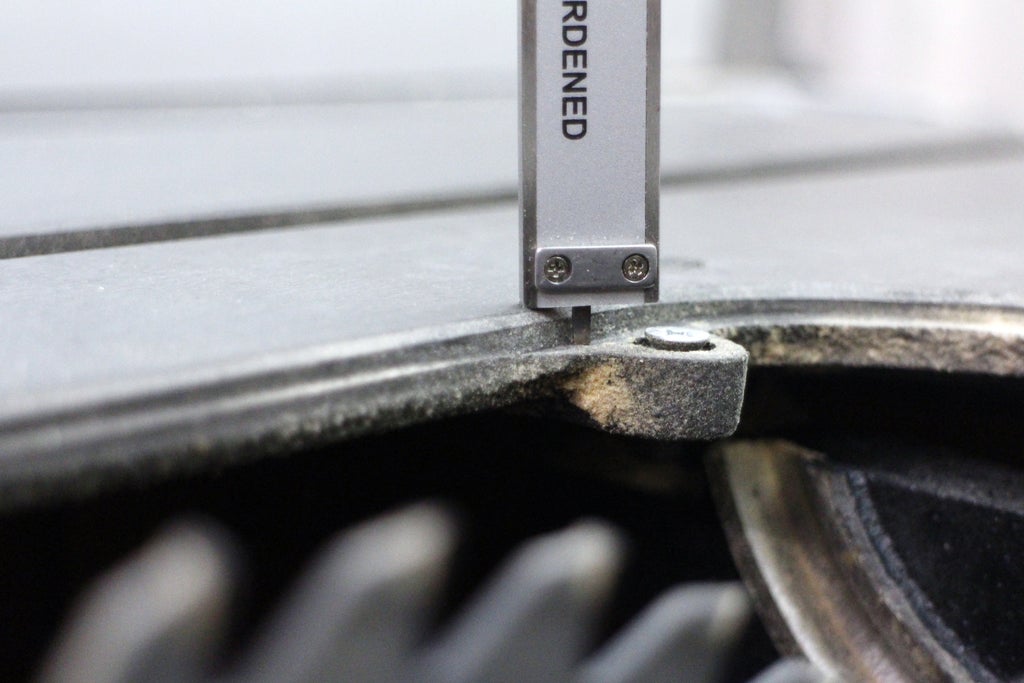
To get accurate readings I used digital calipers. Make sure your saw insert housing is clear of sawdust so you can get the best readings. Most saws have height adjustment screws so you can level out the insert after if your readings are a little off, but it's better to get accurate measurements before starting.
Step 2: Trace
The scrap plywood I sourced was roughly the same thickness as the existing insert, about ⅛". There are height adjustment screws in the insert housing that allow the insert to be raised and leveled a little, so as long as your scrap plywood is within this threshold you should be fine.
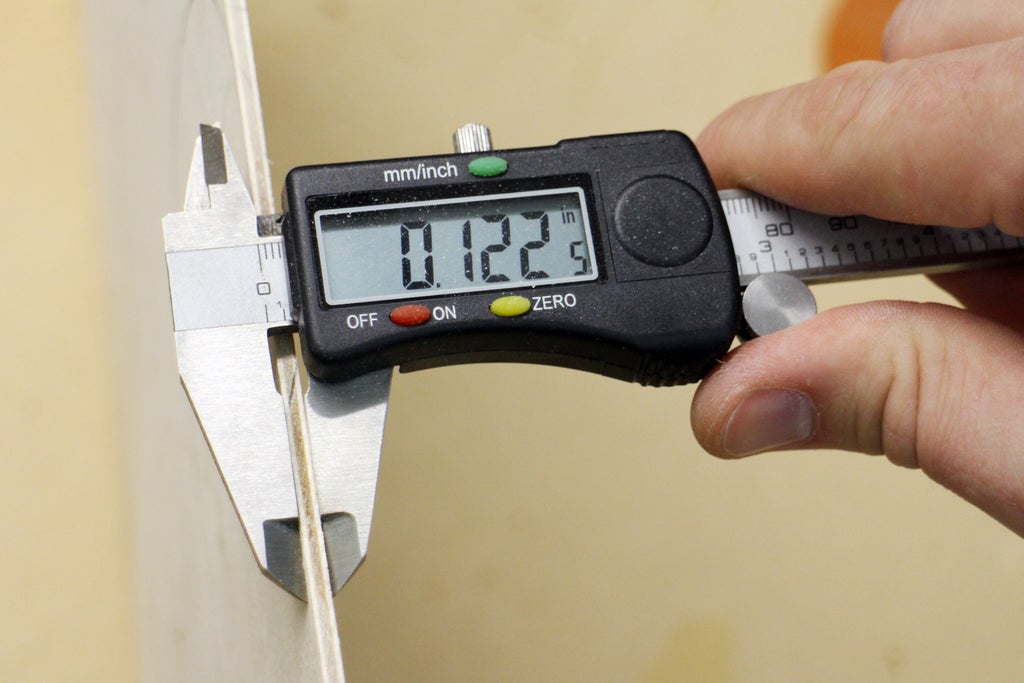
Place the stock insert face-down on the plywood and trace the outline with a pencil. There's no need to trace the blade slot, since we'll be cutting that out later.

Step 3: Set Fence + Rip Cut to Width
Set your fence to the width of the insert, raise the blade only slightly higher than the plywood stock you're using, and then rip the plywood with the overall width.
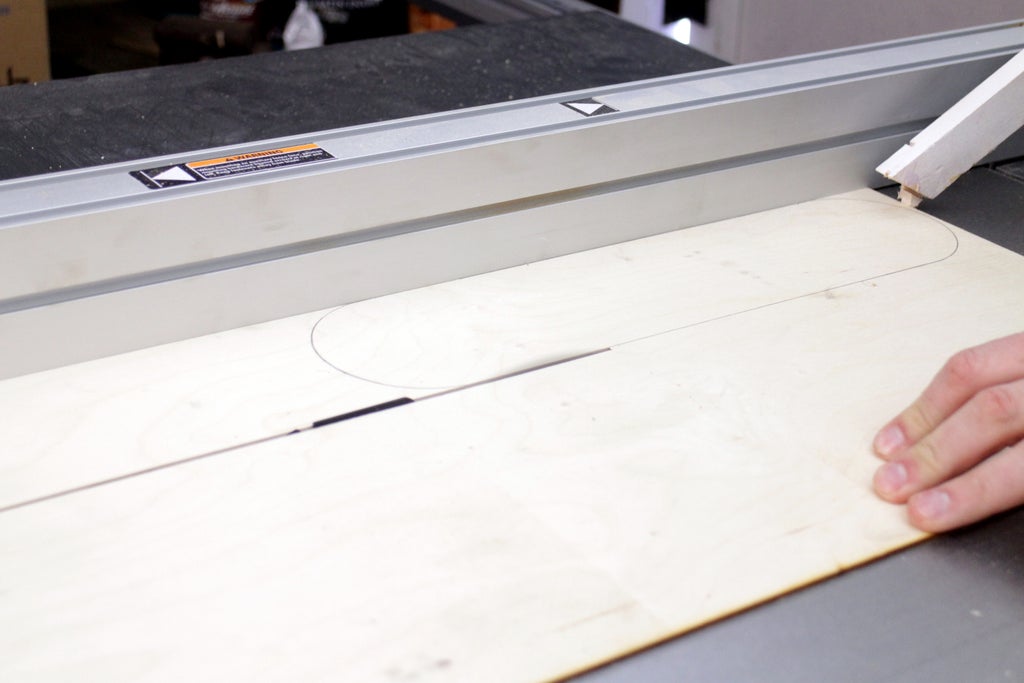
Setting a table saw fence accurately before you cut is critical to get accurate and consistent results on your table saw. Setting the fence is a topic covered in the free Table Saw Class - Meet Your Table Saw, check it out if you're unsure about your fence accuracy.
Step 4: Mitre Cut to Length
Once you have the plywood ripped to the right width it can be cut down to the right length.
Cutting long pieces on the table saw requires a mitre cut. Mitre cuts are made with the mitre gauge and need to have the fence moved away so it doesn't interfere while cutting.
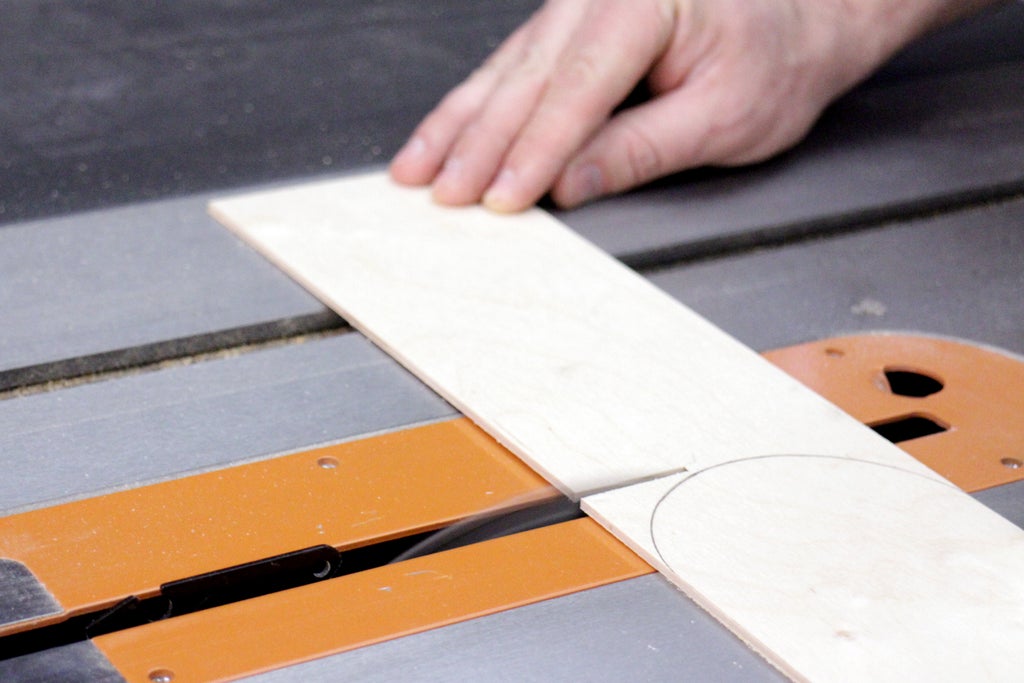
Set the mitre gauge to 0° and place the ripped stock against the back of the mitre gauge, lining the traced outline of the insert edge with the blade. The mitre cut doesn't need to be right on your trace line, since we'll be refining the cut by sanding in a later step. This mitre cut is just to trim down the length into something more manageable.
Use the mitre gauge to cut both ends of the plywood to trim up the outline.
Step 5: Angled Mitre
To make the sanding process easier, material was removed from the corners of the plywood by making angled cuts on the mitre gauge - follow the link to learn how to make accurate angled mitre cuts.
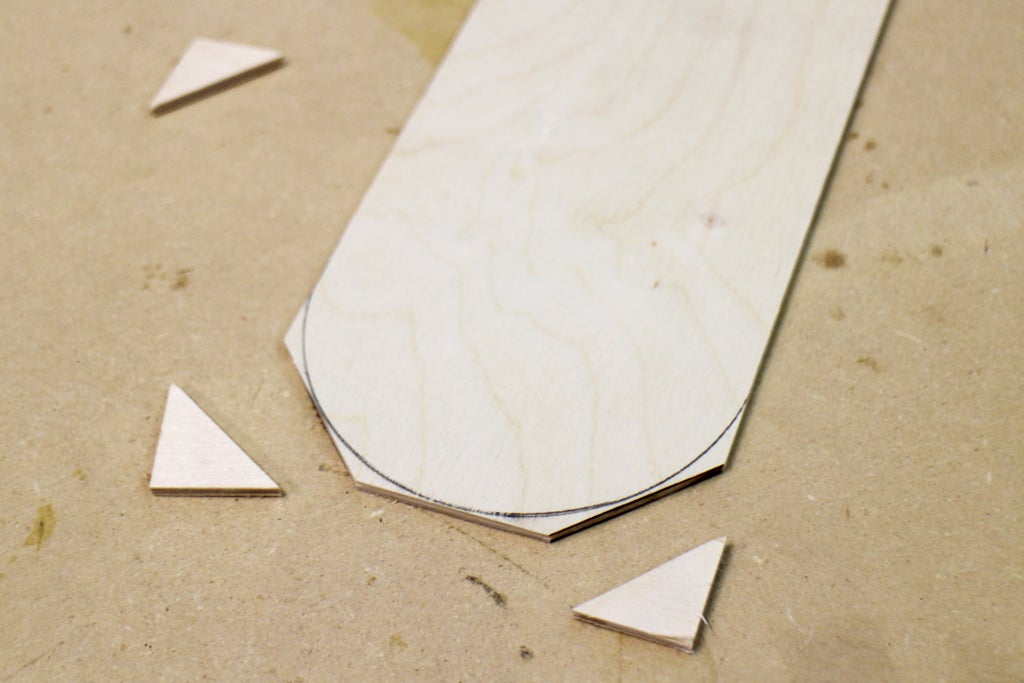
The mitre gauge was set to 45° and the traced plywood was placed in the mitre gauge with the end to be cut trailing the mitre gauge. Corners were cut, and the mitre gauge was moved between the two mitre tracks so that every cut was trailing the mitre gauge and not leading it.
Step 6: Sanding
To round off the corners of the plywood a powered sander was used. Almost any type of sander can work for this application. Since I don't have a stationary sander I made do by inverting my belt sander and clamping it to the workbench.
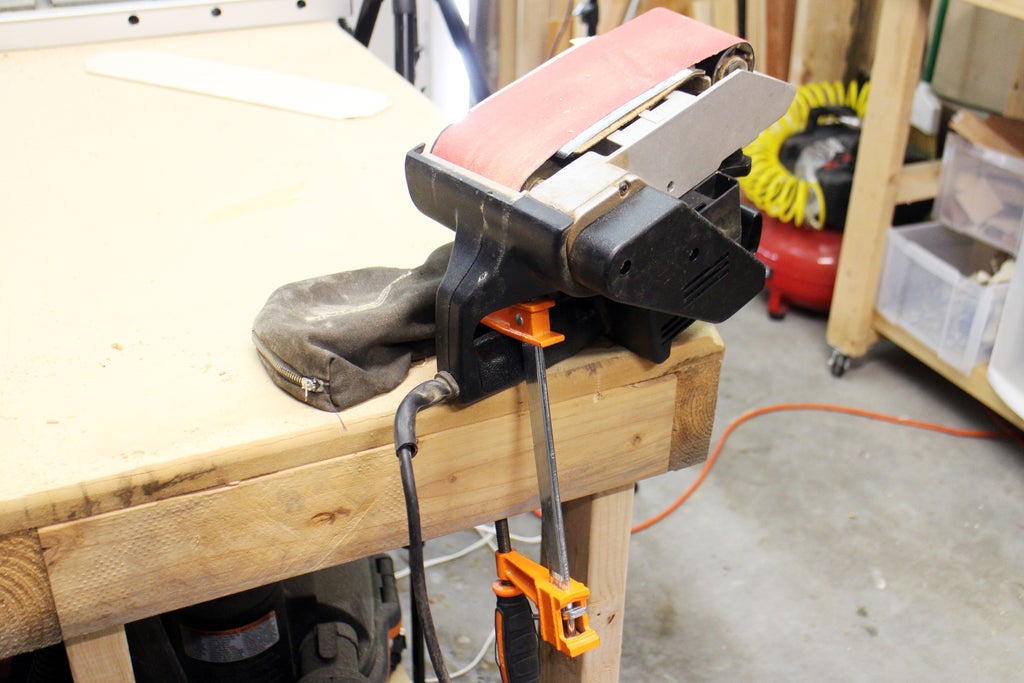
With the belt sander secured to the bench the trigger can be locked on and allow sanding with both hands without holding on the sander.

The corners of the plywood were sanded down right to the traced outline of the insert. Since the trace was alightly larger than the insert I knew I could sand very close.

After power sanding I cleaned up any rough spots by hand sanding with fine grit sandpaper.
Step 7: Test Fit
Before packing away the sanding equipment see if the sanded insert fits in the table saw housing.
Some table saws have irregularities inside the insert housing, you can see if this applies to you by turning over your stock insert and seeing if there's any special clips or cutouts. If there are any, see if you can mimic them on the underside of your zero clearance insert to make a snug fit.

Since this style of insert is very minimal it's unlikely that there will be any interference from the housing you need to worry about. With the sanded insert in the housing check to ensure a good snug fit, sand away any areas as needed to get the fit you want.
Step 8: Clamp Insert in Place
Fully retract the blade and place the insert into the housing. Lay a sacrificial board over the saw table and directly over the insert, and then clamp in place.
Start the saw and slowly raise the blade fully, cutting through the insert and the sacrificial board.
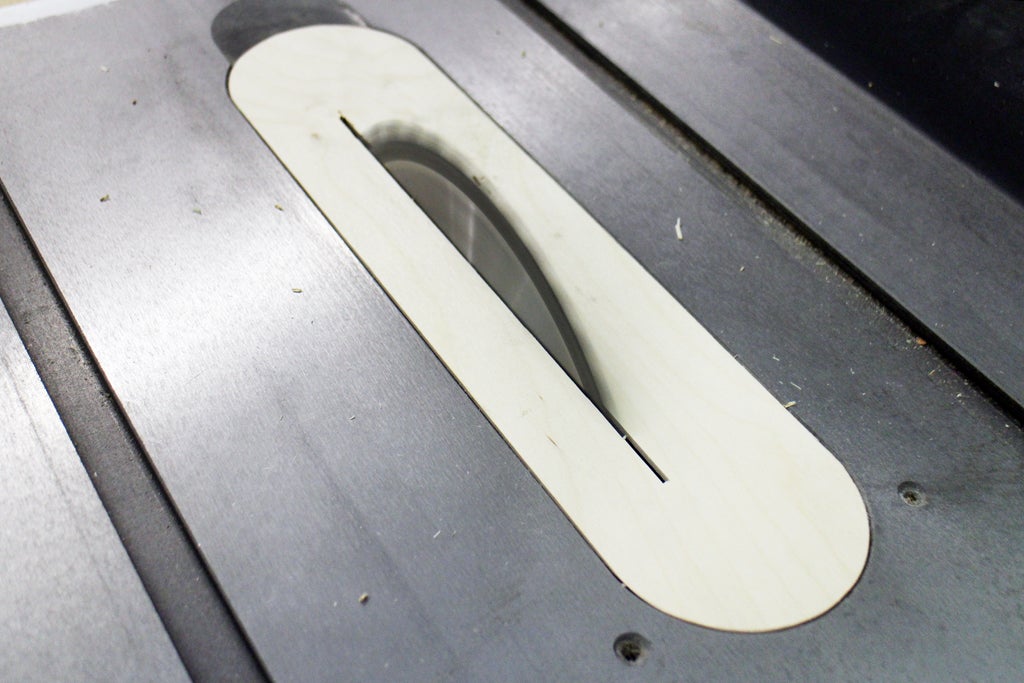
The board will keep the insert in place while the zero clearance kerf is being cut. While the saw is still on, lower the blade completely and then turn the saw off. Remove the sacrificial board and check out the cut in your insert.
Step 9: Drilled Opening
To make the zero clearance insert easier to install and remove a finger hole can be drilled. Using the stock insert as a guide for placement, I drilled a ¾" hole in the plywood insert.
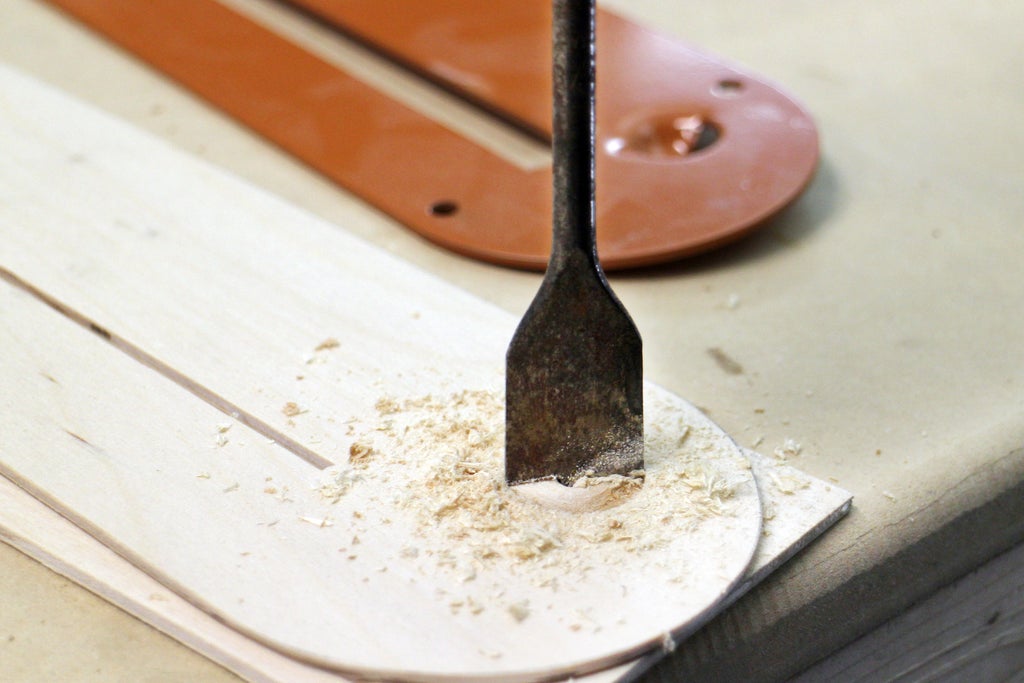
To reduce tearout I drilled the hole with a sacrificial board underneath the plywood insert.
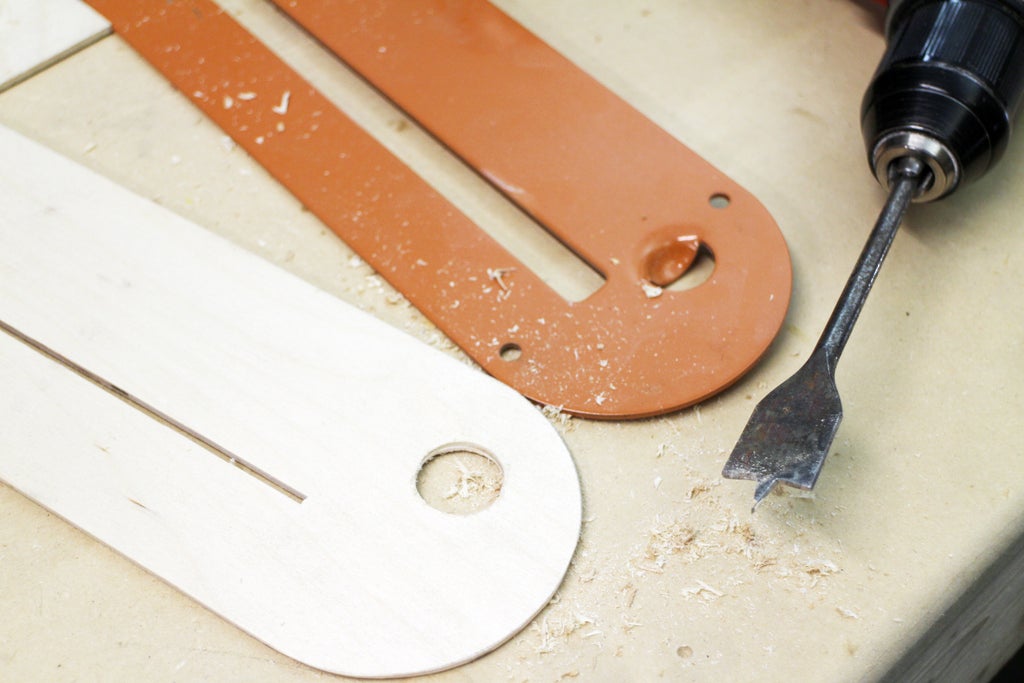
After drilling the opening the edges were smoothed out with sandpaper.
Step 10: Install
The zero clearance insert is ready to be installed and rip thin stock without fear of thin strips of wood being sucked into the saw.
Even though the zero clearance insert doesn't allow for sawdust to be extracted I still use the vacuum on my table saw as the suction pulls the zero clearance insert down into the saw and keeps the insert firmly in place. My stock insert has a clip on the underside that helps hold it in place, but this zero clearance insert doesn't require it when the vacuum is on.

To keep the zero clearance insert operating as it should make sure the blade is of the saw perpendicular to the table, this will keep the clearance as minimal as possible and prevent any thin stock from being pulled into the saw.
have you made your own zero clearance insert from this Instructable? I want to see it!
Happy making :)

Participated in the
Woodworking Contest 2017

Participated in the
Build a Tool Contest 2017













